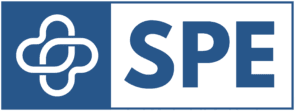Table of Contents
- Benefits of Using Staff Incentives in Cosmetic Plastic Surgery Practices
- Different Types of Incentives for Plastic Surgery Teams
- How to Set Up your Team Incentive system: Step-by-Step
- Compliance Considerations
- Incentive Case Examples
- Common Mistakes to Avoid Using Incentive Systems
-
- Start with Clear Goals
- Keep It Simple and Transparent
- Incentivise Both Individual and Team Success
- Offer a Mix of Incentive Types
- Recognise Activities / Behaviour / Habits – Not Just Results
- Make It Frequent and Timely
- Ensure Fairness and Inclusion
- Reinforce with Recognition – One of The 5 Love Languages
- Adjust and Evolve Over Time – Always Set Time Limits on Incentive Programs
- Follow Legal and Ethical Rules for Incentives (Especially in USA / Australia)
- Using Employee Incentive Schemes (EIS)
- Types of Incentives : Individual and Group/Team Rewards
- Measuring Incentive Scheme Success
- Designing your EIS – Questions to Consider:
- 10 Steps for Effective Employee Incentive Scheme Design:
- A Checklist for a Good Incentive Scheme
- Top Tips for an EIS that Works
- Pitfalls With EIS Incentive Schemes
- Side Effects Of Poorly Designed EIS – Your Actions Have Consequences
- Always have a Clear Game Plan that is aligned (Stephen Covey the 8th Habit)
- Dave’s Staughton at ISAPS2025 – International Society of Aesthetic Plastic Surgeons
- Taking Action on Using Staff Incentives
- Further Reading about Staff Incentives and Motivation
Benefits of Using Staff Incentives in Cosmetic Plastic Surgery Practices
Do Incentive Programs Work in a Medical Practice?
Yes they do. But poorly designed incentive program can have serious consequences.
-
About Incentives for Plastic Surgery Practices
- Tailored team incentives can drive productivity, increase revenue, and improve staff satisfaction in your plastic surgery practice
- There are several challenges to overcome involved in balancing clinical, surgical, and commercial success with incentives
- It is useful to understand the concepts of Motivation Vs Inspiration – especially the role of Internal & External Motivations
-
Why Incentives Matter in Private Clinics
- Staff retention and burnout are current challenges for in aesthetics and surgical teams
- Team Motivation affects:
- Patient experience and conversion rates
- Theatre turnover and schedule efficiency
- Financial Results & Upselling of non-surgical and product-based services
- There is a strong Link between happy teams and practice growth
-
What Makes a Good Incentive System?
- It is Fair, transparent, and achievable
- It is aligned with clinic values and business priorities
- The Incentive System is motivating without being manipulative
- It’s flexible to include all departments (admin, nursing, surgical assistants, sales staff)
Different Types of Incentives for Plastic Surgery Teams
Financial Rewards (where local regulations allow)
- Monthly or quarterly team bonuses for:
- Reaching revenue targets
- Hitting conversion rate benchmarks
- Online Review milestones
- Individual commissions (where legal) on:
- Skin product sales
- Upsell of complementary treatments (e.g. injectables or scar therapy)
- Consultation bookings converted
Recognition & Non-Monetary Rewards
- Employee recognition perks (parking, early finish, coffee tab)
- Team shoutouts in meetings and internal comms
- Wall of Fame for patient reviews mentioning team members
- Certificates or awards for service excellence
Experiential & Lifestyle Incentives
- Team events (dinner, spa day, theatre show)
- Training grants or conference attendance / Travel subsidies
- Surprise rewards – Coupons/Vouchers, massage, birthday treats
Career Growth Incentives
- Access to advanced courses or internal promotion pathways
- Opportunities to lead mini-projects (e.g. product launch, process improvement)
- Paid education days for upskilling
How to Set Up your Team Incentive system: Step-by-Step
- Start with a Performance Baseline – Measure current KPIs
- Survey Your Team – What really motivates them? (Find their Love languages)
- Define Objectives – Choose metrics that matter (e.g. average spend per patient, Enquiries or Consultation conversion rate, review count, rebooking rate)
- Choose Feedback Frequency – Daily, weekly, monthly, quarterly
- Keep It Visible – Use whiteboards, dashboards, EHR/CRM software, or group chats
- Communicate & Celebrate Wins – Recognition in Weekly huddles or monthly awards
- Review & Evolve – Adjust as team or clinic goals shift
Compliance Considerations
- Incentives MUST align with local Regulations and Advertising guidelines
- E.g. No “before and after” photos as part of contest or bonus mechanisms
- Strongly Avoid encouraging performing procedures without clinical justification
- Transparent disclaimers in internal sales language
Incentive Case Examples
- Example 1: Medspa team exceeding skincare retail goal and winning education grants
- Example 2: Surgical booking team rewarded for reducing noshows or cancellation rates
- Example 3: Monthly cross-team competition for number of 5-star reviews with prizes
- Example 4: Practice team earns a set fee for each large surgery performed – pid monthly. (Around 1-2% of surgery fee). This is split by days worked in the month.
Common Mistakes to Avoid Using Incentive Systems
- AVOID Overly complex systems that no one tracks
- AVOID Favouritism or unclear rules – same “Employee of the month”
- AVOID Only rewarding top sales performers (leaves support roles out)
- AVOID Focusing only on financial rewards (burnout risk)
- AVOID the endless rewards system – set a fixed time for the incentive and review at end of each period (e.g. 6 or 12 months)

Pros & Cons of Using Staff Incentives
Seven Pros of Using Staff Incentives in a Plastic Surgery Clinic
- Boosts Motivation and Morale
- Helps keep front desk, consultants, and clinical teams energised
- Recognises effort in high-pressure environments like theatre days or full consultation lists
- Drives Key Business Metrics
- Improves booking conversion rates, reviews, retail sales, or surgical day efficiency
- Encourages upselling and cross-referrals to non-surgical services or skin care
- Reinforces Team Accountability
- Promotes shared responsibility for patient experience and revenue
- When applied well, creates peer motivation and cross-functional collaboration
- Supports Staff Retention
- Incentives show appreciation and can reduce turnover in support roles
- Adds value beyond base salary (especially for admin or junior staff)
- Makes Metrics Visible and Fun
- Gamified scoreboards and reward programs make performance tangible
- Helps focus team on what really matters — e.g. fewer cancellations, better follow-up
- Encourages Product & Treatment Familiarity
- Incentivising use of in-house skincare or medspa services helps staff recommend confidently
- Can Build Positive Culture if Designed Well
- Incentives tied to values (e.g. compassion, teamwork) support a high-trust, high-performance culture
Seven Cons of Using Staff Incentives in Plastic Surgery Clinic
- Risk of Misalignment with Patient Safety
- Overemphasis on revenue targets can create unethical pressures
- Team may push consultations or procedures that aren’t medically necessary
- Regulatory Compliance Risks
- Incentives linked to booking surgeries or testimonials must follow strict regulations
- Some clinics can’t advertise discounts, gifts, or time-limited offers for medical procedures
- Creates Internal Competition or Resentment
- Individual rewards can cause tension if some team members feel excluded or under-recognised
- Can damage morale if seen as unfair or poorly communicated
- Can Lead to Short-Term Thinking
- Teams may focus on “hitting the number” rather than long-term patient care or brand reputation
- Complexity in Tracking and Admin
- Incentives need accurate KPIs, dashboards, and consistent tracking
- Poorly managed systems create confusion, errors, or favouritism claims
- May Encourage Gaming or Manipulation
- Staff might “game the system” (e.g. logging fake leads, rushing reviews)
- Needs checks, balances, and a trust-based culture
- Financial Cost and Budget Creep
- If not monitored, incentive costs can blow out
- Needs clear ROI tracking to ensure sustainability
Recommendations for Balanced Implementation of Staff Incentives
- Focus on behaviours and service quality, not just financial outcomes
- Blend individual and team rewards
- Include non-monetary recognition like praise, perks, or education days
- Align with ethical frameworks and regulatory requirements
- Track and review programs every quarter for fairness and relevance
Designing Staff Incentives in Plastic Surgery Clinics
Here’s a practical guide to incentive design tips tailored for plastic surgery clinics. These tips help you create a reward system that is fair, motivating, and aligned with business goals — especially for teams including reception, nurses, surgical coordinators, patient consultants, and non-surgical staff.
-
Start with Clear Goals
- Link incentives directly to measurable business outcomes:
- Surgery revenue or number of bookings
- Conversion rate from enquiry to consult or consult to surgery
- Patient review volume or satisfaction score
- Retail product sales (e.g., skincare)
- Use SMART targets: Specific, Measurable, Achievable, Relevant, Time-bound
-
Keep It Simple and Transparent
- Avoid complicated incentives formulas — staff should instantly understand:
- What’s expected
- How they earn the incentive
- When they’ll receive it
- Use easy-to-read trackers (e.g., whiteboards, digital dashboards, scorecards)
-
Incentivise Both Individual and Team Success
- Individual examples:
- Coordinator bonuses for every completed surgery over baseline
- Nurse incentive for high skin product sales
- Team examples:
- Group reward if total theatre day hits $X
- All staff win if Net Promoter Score (NPS) improves by 10 points
-
Offer a Mix of Incentive Types
- Financial:
- Bonuses, gift cards, tiered commission structures
- Non-financial:
- Time-off vouchers, education/training opportunities
- VIP recognition, fun experiences (team dinner, spa, show)
- “Surprise and delight” prizes (UberEats, Friday treats, lucky dips)
-
Recognise Activities / Behaviour / Habits – Not Just Results
- Don’t only reward outcomes — reinforce the right habits:
- Warm phone etiquette and follow-up
- Preparing the OR/theatre ahead of time
- Patient education and empathy shown in consults
-
Make It Frequent and Timely
- Shorter feedback loops = better engagement:
- Weekly rewards for reviews or retail sales
- Monthly or quarterly team bonuses
- Avoid waiting till end of year — motivation fades over time
-
Ensure Fairness and Inclusion
- Consider roles that don’t directly influence sales or surgeries (e.g., sterilisation, admin, marketing)
- Offer shared rewards or peer-nominated bonuses
- Recognise effort and consistency, not just “top performers”
-
Reinforce with Recognition – One of The 5 Love Languages
- Celebrate wins publicly in team huddles, chat groups, or notice boards – What gets celebrated gets achieved.
- Pair tangible rewards with positive reinforcement:
- A thank-you card, shout-out, or small ceremony can double the impact
-
Adjust and Evolve Over Time – Always Set Time Limits on Incentive Programs
- Review incentive outcomes every 3–6 months
- Ask staff what’s working and what feels unfair or confusing
- Phase out underperforming rewards and test new ones
- Consider short-term campaigns to focus on a NEW HABIT (Reviews, Referrals, New Product/Service promotional launch)
-
Follow Legal and Ethical Rules for Incentives (Especially in USA / Australia)
- Observe Federal & State Laws HIPPA/ RACS / AHPRA guidelines: No incentive should pressure or influence patient clinical decisions
- Avoid rewards based on number of procedures booked unless clinically appropriate
- Ensure disclaimers if linking to patient reviews or testimonials
- Beware of rewards & incentives if taking Medicare / Insurance cases
Using Employee Incentive Schemes (EIS)
Money is a motivating factor for most people
- Higher compensation can influence individual behaviour.
- Money is only one motive for employees to do their job well.
- Prestige, power, status are other motivating factors.
- The best type of motivation comes from “within”
Ca$h Isn’t KING for Staff Rewards
“How did you spend your last cash reward?” Wirthlin Worldwide research
- 29% of respondents said they paid bills
- 11% purchased gifts for family
- 11% bought household items
- 11% put the money in savings
- 15% said they never received cash
- 18% didn’t remember
Many people actually regret choosing cash over experiences / tangible rewards
Design Rewards that Motivate
- Aspirational Rewards
- Something you Wouldn’t BUY for yourself (Avoids that Guilty Feeling)
- Exciting & Experiential (Memorable)
- Generates BUZZ
- Reinforces Effort or Related to Effort
- Not perceived as “a Bribe”
- Creates Long-term affinity
Types of Incentives : Individual and Group/Team Rewards
Forms of Incentives Schemes
- Recognition Schemes
- Bonus schemes
- Merit pay plans
- Profit-sharing plans
- Gain-sharing plans
- Employee Stock Ownership Plans (ESOP)
Measuring Incentive Scheme Success
Financial Measures
- Year on year Sales growth
- Cost of incentive program expressed as a % of total sales
- Incentive cost as a % of sales
- Referral growth
- Sales Conversion rates
Non-financial Measures
- % participation
- Reward redemptions
- Qualitative survey data (measure awareness and understanding)
- Reward program Web site visits
Structuring your Employee Incentive Scheme (EIS)
-
Understand your People before choosing type of Incentive
Consider your people and the history of past rewards
Identify the best type of reward categories e.g. combination of commissions, merchandise, travel or experiences.
- Team (Group) vs Individual Rewards
- Consider whether a team reward will be more impactful than an individual reward. (possible Downside of Individual rewards)
- EIS Budget & Context
- Offer rewards that are affordable within the available budget / economics of the program. Where budgets are tight, you need clear communication about the purpose of the incentive.
- EIS BUDGET – a typical company wide incentive program invests between 0.3% to 1.0% of total payroll costs – with some up to 3%
Designing your EIS – Questions to Consider:
- What gets Rewarded gets Repeated – What kind of behaviour do we really want to encourage?
- How do we Measure Performance? – Evaluations versus Indicators
- Bonus Scheme Levels – Tiered Vs Linear , Capped or Uncapped – Benchmarking against others?
- At Risk Component? – How much weight should the incentive component have in total renumeration?
- Payout frequency? – Short/Long term – yet Avoid Entitlement mentality
10 Steps for Effective Employee Incentive Scheme Design:
- Define and Clarify Business Goals
- Analyse the Culture, Patients, Products, and Processes
- Define the Incentive Scheme’s Objectives
- Conduct a Proper Cost-Benefit Analysis & Decide Budget
- Determine Which Team Members and Levels to Target
- Select the Incentive Mechanism(s)
- Conduct the Incentive Scheme Design Work
- Run a Pilot Test (limited time)
- Communicate & Market the Scheme to the Staff
- Monitor the Scheme’s Performance and Adjust regularly
A Checklist for a Good Incentive Scheme
- Managers support & understanding – they “Buy-In”
- Performance is influenced by employee behaviour
- Correct Metrics – measurable, objective indicators
- Fairness –goals are attainable
- Right Rewards chosen
- Team or Individual Reward basis or BOTH
- Correct Time-Period selected – Smoothing results?
- Costs are proportionate to the benefit to the business.
- Transparent – Easy to Understand and communicate
- Easy to administer
- Variable if circumstances change
Top Tips for an EIS that Works
- Make it part of the way that the organisation thinks about rewards – build a recognition-based culture
- Don’t have just one scheme – develop lots and see which ones work well.
- Make the reward as soon as possible after the event and appropriate to the effort and the person.
- Don’t make it overly bureaucratic. Someone (usually HR) needs to monitor it, but line management must own it.
- Publish success – what you focus on expands
- Be prepared to change, revitalise or replace the scheme/s.
Pitfalls With EIS Incentive Schemes
- Too many targets – Overwhelm
- Aiming at the Wrong Targets
- Wrong Focus – time-stretched staff may focus on only one or two measures and abandon others.
- Too much time counting & reporting
- Not worth the effort – Poor time-money balance
- Measurements not objective enough
- Misaligned incentives. Some incentives target helping people change their behavior— but management doesn’t go far enough to help with that modification.
Side Effects Of Poorly Designed EIS – Your Actions Have Consequences
- Heavy use of incentive pay with big monthly bonuses. Sales Staff earned more than managers CAN CAUSE Sales Staff refused to apply for senior jobs.
- To combat debtor problems very strong disincentives for allowing client debts were introduced – CAUSED Sales Staff manipulated statistics or concentrated on stable customers, almost stopped granting of new accounts.
- Heavy focus on sales staff productivity measures with minimum numbers of clients per month to be eligible for bonus – CAUSED Client account quality suffered, some engaged in fraudulent behaviour i.e. fictitious clients
- EIS had a strong emphasis on client portfolio quality CAUSED Sales people became risk averse and shied away from finding new customers
- No base salary offered, only a commission based on sales CAN CAUSE High turnover rate among sales staff, left typically after 2 years with burn out
Always have a Clear Game Plan that is aligned (Stephen Covey the 8th Habit)
Communicate Your Vision, Mission, Strategy and Values – Use memorable stories to make them stickier.
What Employees say:
- JUST 37% say they have a clear understanding of what the organization is trying to achieve and why
- JUST 20% say they are enthusiastic about their team and organization goals
- JUST 20% said they have a clear “line of sight” between their tasks and their team’s and organization’s goals
Dave’s Staughton at ISAPS2025 – International Society of Aesthetic Plastic Surgeons
David Staughton presented this topic at the ISAPS 2025 Conference in Singapore.
Taking Action on Using Staff Incentives
- Incentives can be simple, fun, and deeply motivating
- Tailor rewards to your team’s personality and values
- Use them to reinforce your clinic culture and performance goals
Further Reading about Staff Incentives and Motivation
- Understanding Staff Incentives – Motivating Employees for Greater Success
- Finding & Keeping Great Practice Staff – Recruiting Tips
- How to Live a Better Life – Be Healthier, Wealthier, Wiser and Happier by Working Smarter NOT Harder
- Best Productivity & Effectiveness Tips – How to get better results faster
















